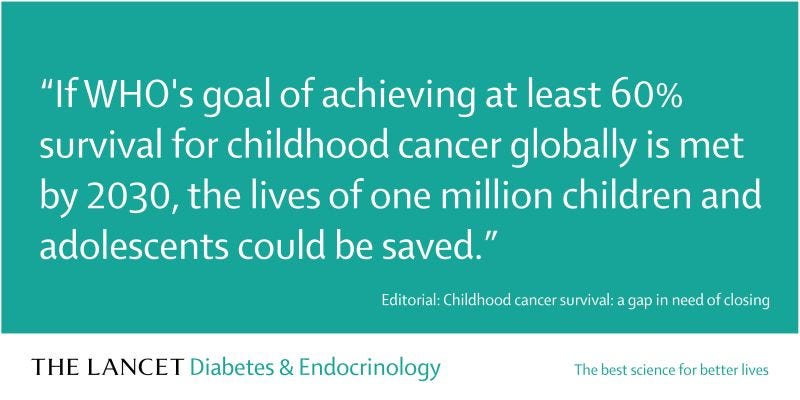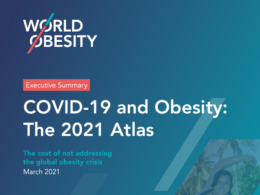
From the linkedin publication
Each year, 400,000 children and adolescents around the world are diagnosed with cancer.
In low-income and vulnerable settings, diagnosis, health-care services, and accessibility of treatments lag far behind high-income counterparts — just 29% of LMICs report cancer medicines being generally available, compared with 96% in HICs.
just 29% of LMICs report cancer medicines being generally available, compared with 96% in HICs.
On International Childhood Cancer Day, an Editorial from The Lancet Diabetes & Endocrinology focuses in on closing the childhood cancer survival gap
Childhood cancer survival: a gap in need of closing
The Lancet
Editorial
February 11, 2022
With a child dying from cancer every 3 min and survival as low as 20% in many low-income and middle-income countries (LMICs)-compared with 80% in most high-income countries-the need for children and adolescents with cancer to have better access to care could not be more apparent or urgent.
Raising awareness of this unmet need, International Childhood Cancer Day (ICCD) on Feb 15 is a day to voice support for children and adolescents with cancer, those who have had the disease, and their families and carers.
The second year of a 3-year, global, collaborative campaign with the theme ‘Better Survival’ is achievable #throughyourhands, ICCD 2022 messaging is aligned to the WHO Global Initiative for Childhood Cancer, which has set the goal of achieving at least 60% survival for all children and adolescents diagnosed with cancer globally by 2030.
Each year, 400 000 children and adolescents aged 0–19 years around the world are diagnosed with cancer, most commonly leukaemias, brain cancers, lymphomas, and solid tumours (eg, neuroblastoma and Wilms tumours).
Despite risks of endocrine-system cancers such as those of the thyroid, pancreas, and neuroendocrine system being lower among this age group, survivors of childhood cancer are at high risk of developing endocrine disorders later in adulthood (including cardiometabolic disease, hypothalamic-pituitary-adrenal axis dysfunction, infertility, and low bone mineral density) and require life-long surveillance and care.
Cancer is now the leading non-communicable disease-related cause of death in children and adolescents in high-income countries and a growing number of LMICs-yet childhood cancers are mostly curable if diagnosed early enough.
In low-income and vulnerable settings, diagnosis, health-care services, and availability and affordability of treatments still lag far behind those in high-income counterparts; only 29% of LMICs report cancer medicines being generally available compared with 96% in high-income countries.
If WHO’s goal of achieving at least 60% survival for childhood cancer globally is met by 2030, the lives of one million children and adolescents could be saved.
What better motivation do we need to close the gap in survival outcomes?
Originally published at https://www.thelancet.com.












